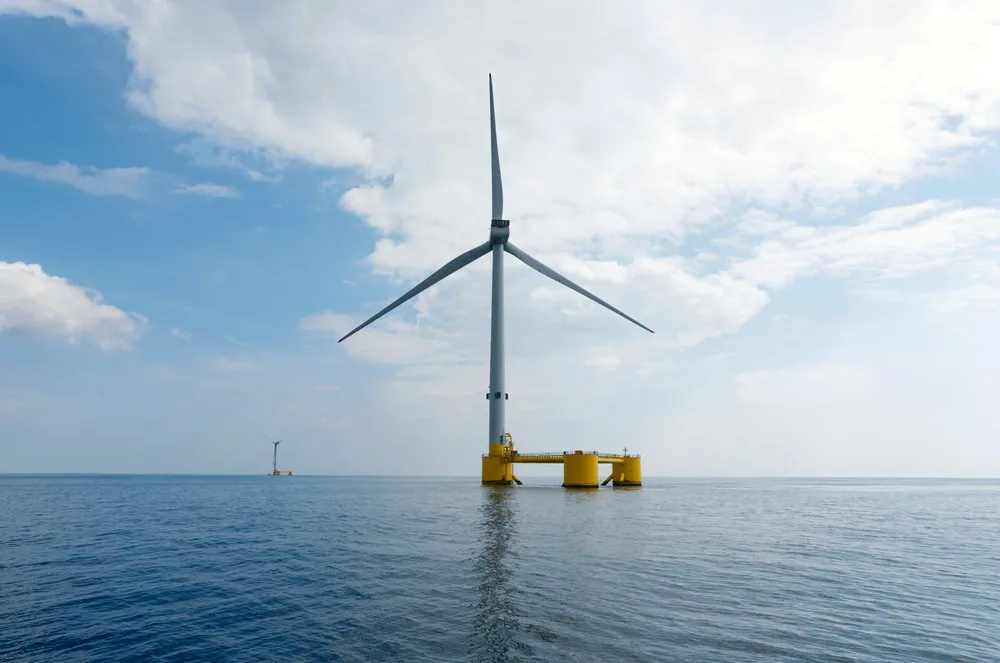Floating wind projects face uncertain future after failing to secure UK CfDs
Projects that miss out on auction rounds face difficulties keeping supply chain and staff in place while they wait for next chance to bid, says industry expert

Several floating wind projects that did not secure contracts at the UK’s recent renewable energy auction are facing an uncertain future, with one TotalEnergies joint venture reportedly set to split and an EDF project reviewing its options after a failed bid.
The latest UK Contracts for Difference (CfD) auction, AR6, was hailed as a landmark for the floating wind sector when it was revealed this month that Green Volt, aiming to be the world’s first commercial-scale project, had won a 400MW contract.
Green Volt, which has 560MW of capacity in total, is being developed by Flotation Energy and Vårgrønn, a joint venture between Plenitude and HitecVision. It is slated to deliver green power to oil and gas platforms.
The project is double the size of Europe’s current installed floating wind capacity, says Norwegian Offshore Partners.
Green Volt secured a strike price of £139.93/MWh (2012 prices) for its power from a £270m ($360m) CfD budget for emerging technologies. That budget included £15m ringfenced for tidal stream projects, six of which secured contracts for 28MW of power at £172/MWh.
As is typical in auctions, the success of one bidder came at the expense of others. In this case, Green Volt’s large CfD appears to have crowded out four other pioneering floating wind projects eligible to bid.
One of those is the 100MW Erebus test and demonstration project being developed in the Celtic Sea by Blue Gem Wind, a joint venture between French oil major TotalEnergies and Irish offshore wind developer Simply Blue.
In the wake of that result, a Blue Gem spokesperson said the developer would formulate a strategy that would "fully consider future plans for CfD allocation rounds.” On this occasion, a Simply Blue spokesperson declined to comment on whether Erebus bid, but said that Blue Gem “remains focused” on delivering the project.
The future of the Blue Gem itself may however be in doubt, with TotalEnergies reported earlier this year to be looking to offload its 80% stake in the joint venture. Approached for comment, TotalEnergies did not explicitly deny this, with a spokesperson rather saying they “do not comment on market rumours.”
Another 100MW demonstration project eligible to bid in AR6 was the Pentland floating offshore wind farm that is being developed by Highland Wind Limited, a JV majority-owned by a fund managed by Copenhagen Infrastructure Partners (CIP). Project development is being led by CIP’s development partner, Copenhagen Offshore Partners.
Pentland announced when the AR6 results were made public that it had “not been successful” in the auction. Its director Richard Copeland said that “demonstration projects like Pentland remain of significant importance in enabling floating offshore wind” and it looks forward to working with the UK government on taking Pentland forward.
Matthieu Hue, CEO of EDF Renewables UK & Ireland, said the French utility is "disappointed" Blyth 2 did not win a CfD. "We firmly believe the project would have been key to enabling more floating offshore wind projects in the future."
As a result of missing out, EDF said Blyth 2 is “undergoing a project review” in which it is “looking at the possible options for an alternative route to market given the project was unsuccessful in AR6.”
The final floating wind project eligible to bid in this round was the up to 20MW Forthwind demonstrator floating wind project. US offshore wind developer Cierco Energy launched Forthwind, while Dutch wind turbine designer 2-B Energy has also worked on developing it.
Forthwind cancelled a contract it won in the UK’s 2019 auction round, AR3, with a view to re-bidding in the latest auction, according to a report in renewables intelligence platform 4C Offshore.
Cierco Energy and 2-B Energy did not respond to a request for comment on whether Forthwind bid into AR6.
“The challenges for those projects that missed out in AR6 are many,” said Maf Smith, director of UK renewables advisory firm Lumen and former deputy CEO of RenewableUK.
The supply chain that was in place needs to down tools and wait 12 months, said Smith, "plus the project team themselves have to be kept busy for a year on other projects.”
Keeping project staff in place can be particularly difficult for smaller projects and developers, which are less able to move staff around to keep them busy.
Even more worrying, said Smith, is that both floating and fixed bottom projects will need to “rethink strategy ready for AR7, where there could be 12GW of eligible offshore wind projects to compete against.”
They will also “need to get to grips with the new Sustainable Industry Reward,” non-price factor criteria that the government wants to add into the next auction.
The government handed out 9.6GW of CfDs in total at AR6, including 5.3GW of contracts to fixed bottom offshore wind projects, 990MW to onshore wind projects and 3.2GW to solar farms.
(Copyright)